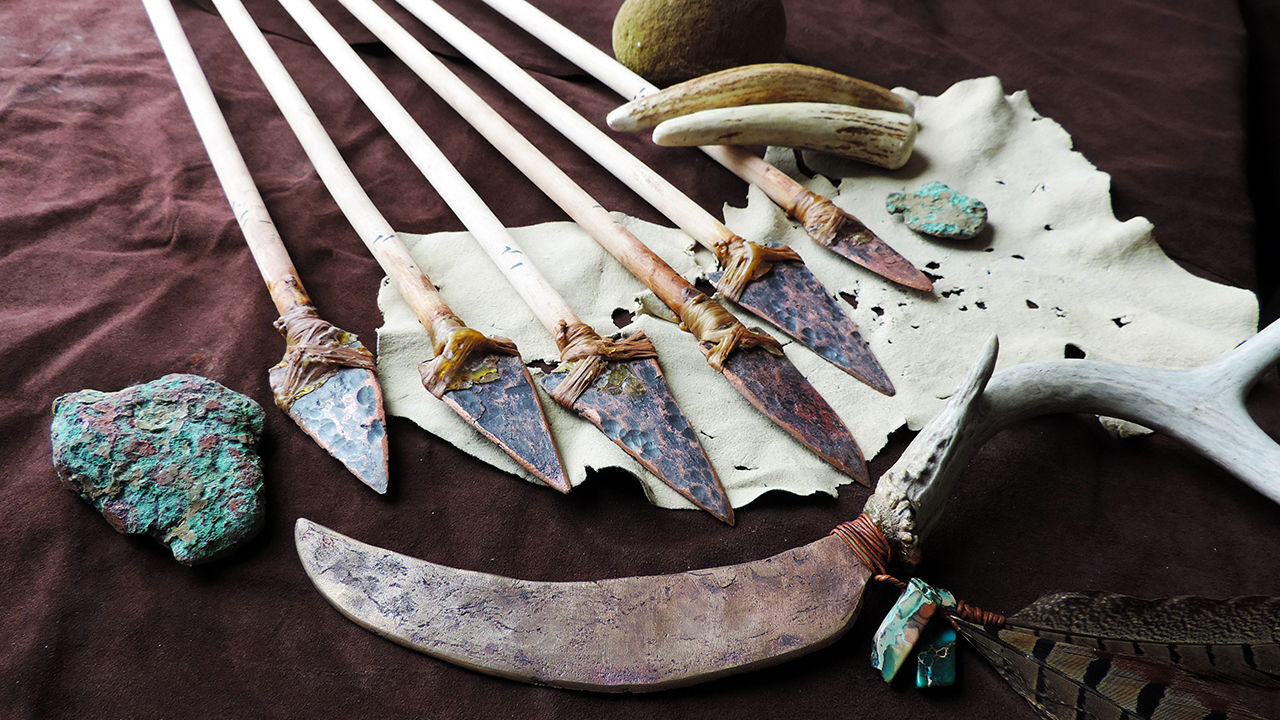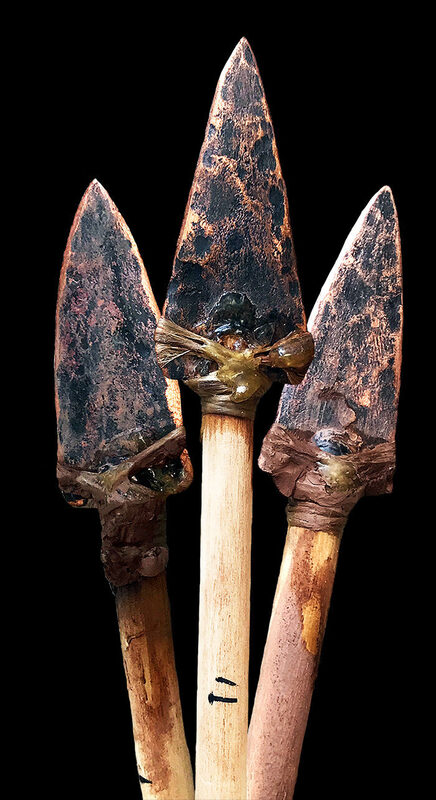
The dates show that early Native Americans were among the first people in the world to mine metal and fashion it into tools. They also suggest a regional climate shift might help explain why, after thousands of years, the pioneering metallurgists abruptly stopped making most copper tools and largely returned to stone and bone implements.
Comment: The question is: what caused this 'climate shift': Volcanoes, Earthquakes And The 3,600 Year Comet Cycle
Earth's largest and purest copper deposits are found around North America's Great Lakes. At some point, Native Americans learned to harvest the ore and heat, hammer, and grind it into tools. They left behind thousands of mines and countless copper artifacts, including lethal projectile points, hefty knives and axes, and petite fish hooks and awls. Today, it's not uncommon to meet residents of the region "who have buckets of copper artifacts [that they've found] tucked away in their basements," says David Pompeani, a geologist at Kansas State University, Manhattan, who studies ancient mining.
When researchers began to date the artifacts and mines, they saw a perplexing pattern: The dates suggested the people of the Old Copper Culture began to produce metal tools about 6000 years ago and then, for reasons that weren't clear, mostly abandoned copper implements about 3000 years ago. After that, early Native Americans used copper mostly for smaller, less utilitarian items associated with adornment, such as beads and bracelets. "The history is just so peculiar," in part because many other ancient cultures didn't abandon metal tools once they learned how to make them, Pompeani says.
About 10 years ago, Pompeani began doctoral research that cast doubt on the Old Copper timeline. He extracted sediment cores from lakes adjacent to prehistoric mines on Michigan's Keweenaw Peninsula and Isle Royale and measured trace metals in the cores, including lead and titanium, that had been released by processing the ore. The analyses showed copper mining began about 9500 years ago in some areas — some 3500 years earlier than once thought. It also ended earlier, about 5400 years ago, Pompeani reported in The Holocene in 2015.

This month in Radiocarbon, the team reports that the most reliable dates, combined with the sediment data, indicate the Old Copper Culture emerged at least 9500 years ago and peaked between 7000 and 5000 years ago. That makes it at least as old, and perhaps older, than copper-working cultures documented in the Middle East, where archaeologists have documented a copper pendant believed to be 8700 years old.
The older window for Old Copper's peak doesn't surprise archaeologist Michelle Bebber of Kent State University, Kent, who has studied the culture. The dates confirm "that hunter-gatherers [were] highly innovative," she says, and willing to "regularly experiment with novel materials."
Comment: If other research is anything to go by, it would appear that the hunter gatherers cultures in the America's may have been quite well organized, with sophisticated technology in a number of areas: America Before by Graham Hancock - Book review
But why did the ancient copper experiment abruptly end? Bebber's work replicating Old Copper-style arrowheads, knives, and awls suggests they weren't necessarily superior to the alternatives, especially after factoring in the time and effort required to produce metal implements. In controlled laboratory tests, such as shooting arrows into clay blocks that simulate meat, she found that stone and bone implements were mostly just as effective as copper. That might be because Great Lakes copper is unusually pure, which makes it soft, unlike harder natural copper alloys found elsewhere in the world, she says. Only copper awls proved superior to bone hole punchers.
Pompeani has identified another potential contributor to Old Copper's fade about 5000 years ago. Sediment cores, tree ring data, and other evidence suggest a sustained dry period struck the region around that time, he says. That could have fueled social and ecological disruptions that made it hard to devote time and resources to making copper tools. Over time, copper may have become something of a luxury item, used to signal social status.
Copper awls, however, bucked this trend: They required relatively little ore to make, Bebber notes, and the people of the Great Lakes continued to use them for thousands of years.
doi:10.1126/science.abi6135



Comment: See also:
- America's prehistoric Clovis people made tools only during 300-year period at time of climatic upheaval
- World's oldest cooking pots found in Siberia, created 16,000 years ago at the end of the last ice age
- Oldest weapons ever discovered in North America uncovered in Texas dig
- Mysteries of Americas earliest inhabitants revealed deep inside Yucatan caves
- A warning from ancient tree rings: The Americas are prone to catastrophic, simultaneous droughts
And check out SOTT radio's: